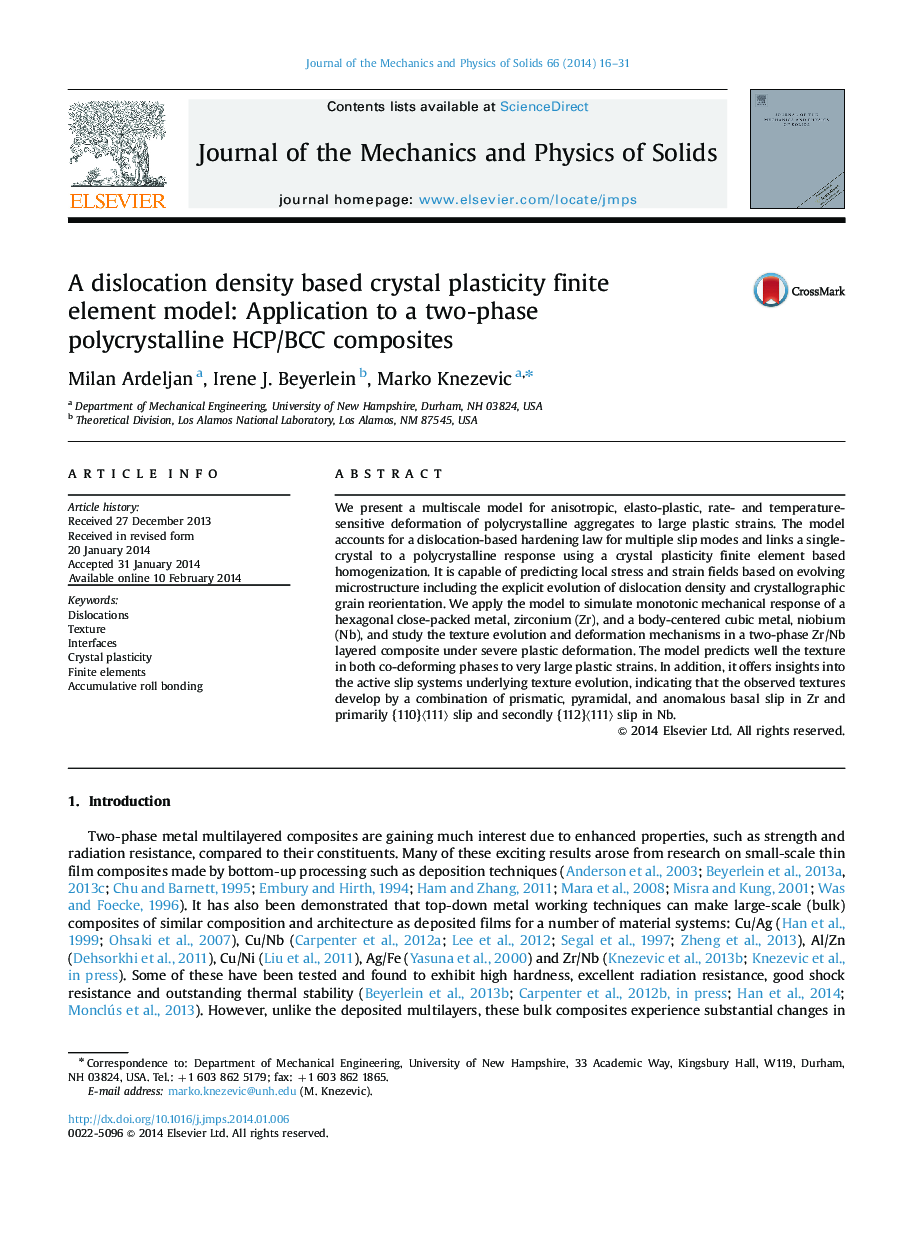| Article ID | Journal | Published Year | Pages | File Type |
|---|---|---|---|---|
| 797320 | Journal of the Mechanics and Physics of Solids | 2014 | 16 Pages |
•A thermally activated rate law for dislocation density evolution is integrated in a CPFE model.•The model predicts texture development in a composite of Zr and Nb during ARB to high strains.•Deformation mechanisms in the phases of the composite during co-deformation are predicted.
We present a multiscale model for anisotropic, elasto-plastic, rate- and temperature-sensitive deformation of polycrystalline aggregates to large plastic strains. The model accounts for a dislocation-based hardening law for multiple slip modes and links a single-crystal to a polycrystalline response using a crystal plasticity finite element based homogenization. It is capable of predicting local stress and strain fields based on evolving microstructure including the explicit evolution of dislocation density and crystallographic grain reorientation. We apply the model to simulate monotonic mechanical response of a hexagonal close-packed metal, zirconium (Zr), and a body-centered cubic metal, niobium (Nb), and study the texture evolution and deformation mechanisms in a two-phase Zr/Nb layered composite under severe plastic deformation. The model predicts well the texture in both co-deforming phases to very large plastic strains. In addition, it offers insights into the active slip systems underlying texture evolution, indicating that the observed textures develop by a combination of prismatic, pyramidal, and anomalous basal slip in Zr and primarily {110}〈111〉 slip and secondly {112}〈111〉 slip in Nb.
